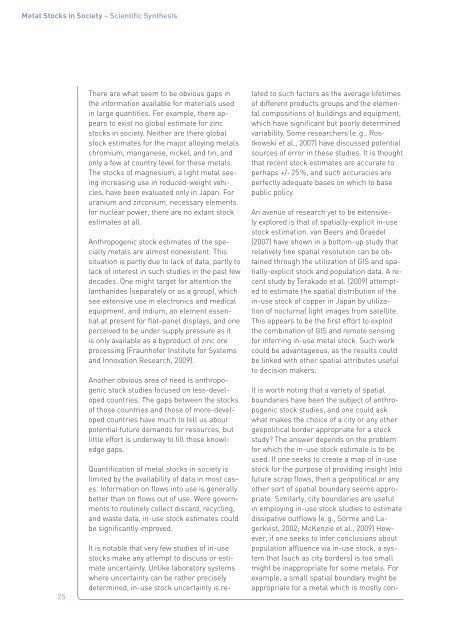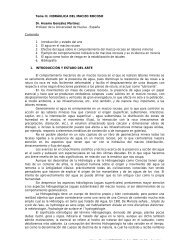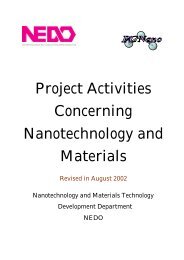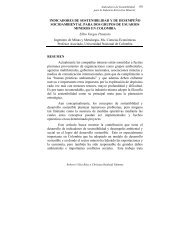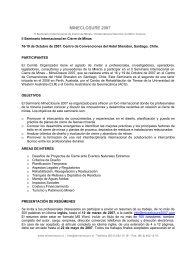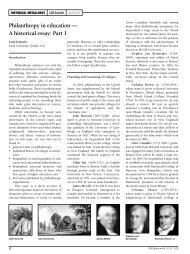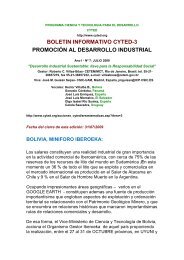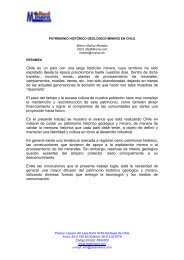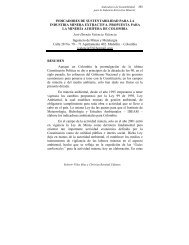Metal Stocks in Society â Scientific Synthesis - UNEP
Metal Stocks in Society â Scientific Synthesis - UNEP
Metal Stocks in Society â Scientific Synthesis - UNEP
- No tags were found...
You also want an ePaper? Increase the reach of your titles
YUMPU automatically turns print PDFs into web optimized ePapers that Google loves.
<strong>Metal</strong> <strong>Stocks</strong> <strong>in</strong> <strong>Society</strong> – <strong>Scientific</strong> <strong>Synthesis</strong>25There are what seem to be obvious gaps <strong>in</strong>the <strong>in</strong>formation available for materials used<strong>in</strong> large quantities. For example, there appearsto exist no global estimate for z<strong>in</strong>cstocks <strong>in</strong> society. Neither are there globalstock estimates for the major alloy<strong>in</strong>g metalschromium, manganese, nickel, and t<strong>in</strong>, andonly a few at country level for these metals.The stocks of magnesium, a light metal see<strong>in</strong>g<strong>in</strong>creas<strong>in</strong>g use <strong>in</strong> reduced-weight vehicles,have been evaluated only <strong>in</strong> Japan. Foruranium and zirconium, necessary elementsfor nuclear power, there are no extant stockestimates at all.Anthropogenic stock estimates of the specialtymetals are almost nonexistent. Thissituation is partly due to lack of data, partly tolack of <strong>in</strong>terest <strong>in</strong> such studies <strong>in</strong> the past fewdecades. One might target for attention thelanthanides (separately or as a group), whichsee extensive use <strong>in</strong> electronics and medicalequipment, and <strong>in</strong>dium, an element essentialat present for flat-panel displays, and oneperceived to be under supply pressure as itis only available as a byproduct of z<strong>in</strong>c oreprocess<strong>in</strong>g (Fraunhofer Institute for Systemsand Innovation Research, 2009).Another obvious area of need is anthropogenicstock studies focused on less-developedcountries. The gaps between the stocksof those countries and those of more-developedcountries have much to tell us aboutpotential future demands for resources, butlittle effort is underway to fill those knowledgegaps.Quantification of metal stocks <strong>in</strong> society islimited by the availability of data <strong>in</strong> most cases.Information on flows <strong>in</strong>to use is generallybetter than on flows out of use. Were governmentsto rout<strong>in</strong>ely collect discard, recycl<strong>in</strong>g,and waste data, <strong>in</strong>-use stock estimates couldbe significantly improved.It is notable that very few studies of <strong>in</strong>-usestocks make any attempt to discuss or estimateuncerta<strong>in</strong>ty. Unlike laboratory systemswhere uncerta<strong>in</strong>ty can be rather preciselydeterm<strong>in</strong>ed, <strong>in</strong>-use stock uncerta<strong>in</strong>ty is relatedto such factors as the average lifetimesof different products groups and the elementalcompositions of build<strong>in</strong>gs and equipment,which have significant but poorly determ<strong>in</strong>edvariability. Some researchers (e. g., Rostkowskiet al., 2007) have discussed potentialsources of error <strong>in</strong> these studies. It is thoughtthat recent stock estimates are accurate toperhaps +/- 25 %, and such accuracies areperfectly adequate bases on which to basepublic policy.An avenue of research yet to be extensivelyexplored is that of spatially-explicit <strong>in</strong>-usestock estimation. van Beers and Graedel(2007) have shown <strong>in</strong> a bottom-up study thatrelatively f<strong>in</strong>e spatial resolution can be obta<strong>in</strong>edthrough the utilization of GIS and spatially-explicitstock and population data. A recentstudy by Terakado et al. (2009) attemptedto estimate the spatial distribution of the<strong>in</strong>-use stock of copper <strong>in</strong> Japan by utilizationof nocturnal light images from satellite.This appears to be the first effort to exploitthe comb<strong>in</strong>ation of GIS and remote sens<strong>in</strong>gfor <strong>in</strong>ferr<strong>in</strong>g <strong>in</strong>-use metal stock. Such workcould be advantageous, as the results couldbe l<strong>in</strong>ked with other spatial attributes usefulto decision makers.It is worth not<strong>in</strong>g that a variety of spatialboundaries have been the subject of anthropogenicstock studies, and one could askwhat makes the choice of a city or any othergeopolitical border appropriate for a stockstudy? The answer depends on the problemfor which the <strong>in</strong>-use stock estimate is to beused. If one seeks to create a map of <strong>in</strong>-usestock for the purpose of provid<strong>in</strong>g <strong>in</strong>sight <strong>in</strong>tofuture scrap flows, then a geopolitical or anyother sort of spatial boundary seems appropriate.Similarly, city boundaries are useful<strong>in</strong> employ<strong>in</strong>g <strong>in</strong>-use stock studies to estimatedissipative outflows (e. g., Sörme and Lagerkvist,2002; McKenzie et al., 2009) However,if one seeks to <strong>in</strong>fer conclusions aboutpopulation affluence via <strong>in</strong>-use stock, a systemthat (such as city borders) is too smallmight be <strong>in</strong>appropriate for some metals. Forexample, a small spatial boundary might beappropriate for a metal which is mostly con-


